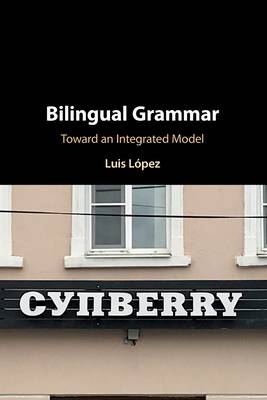
- Afhalen na 1 uur in een winkel met voorraad
- Gratis thuislevering in België vanaf € 30
- Ruim aanbod met 7 miljoen producten
- Afhalen na 1 uur in een winkel met voorraad
- Gratis thuislevering in België vanaf € 30
- Ruim aanbod met 7 miljoen producten
Zoeken
Omschrijving
Does a bilingual person have two separate lexicons and two separate grammatical systems? Or should the bilingual linguistic competence be regarded as an integrated system? This book explores this issue, which is central to current debate in the study of bilingualism, and argues for an integrated hypothesis: the linguistic competence of an individual is a single cognitive faculty, and the bilingual mind should not be regarded as fundamentally different from the monolingual one. This conclusion is backed up with a variety of empirical data, in particular code-switching, drawn from a variety of bilingual pairs. The book introduces key notions in minimalism and distributed morphology, making them accessible to readers with different scholarly foci. This book is of interest to those working in linguistics and psycholinguistics, especially bilingualism, code-switching, and the lexicon.
Specificaties
Betrokkenen
- Auteur(s):
- Uitgeverij:
Inhoud
- Aantal bladzijden:
- 237
- Taal:
- Engels
Eigenschappen
- Productcode (EAN):
- 9781108706773
- Verschijningsdatum:
- 15/09/2022
- Uitvoering:
- Paperback
- Formaat:
- Trade paperback (VS)
- Afmetingen:
- 152 mm x 229 mm
- Gewicht:
- 322 g

Alleen bij Standaard Boekhandel
+ 95 punten op je klantenkaart van Standaard Boekhandel
Beoordelingen
We publiceren alleen reviews die voldoen aan de voorwaarden voor reviews. Bekijk onze voorwaarden voor reviews.











